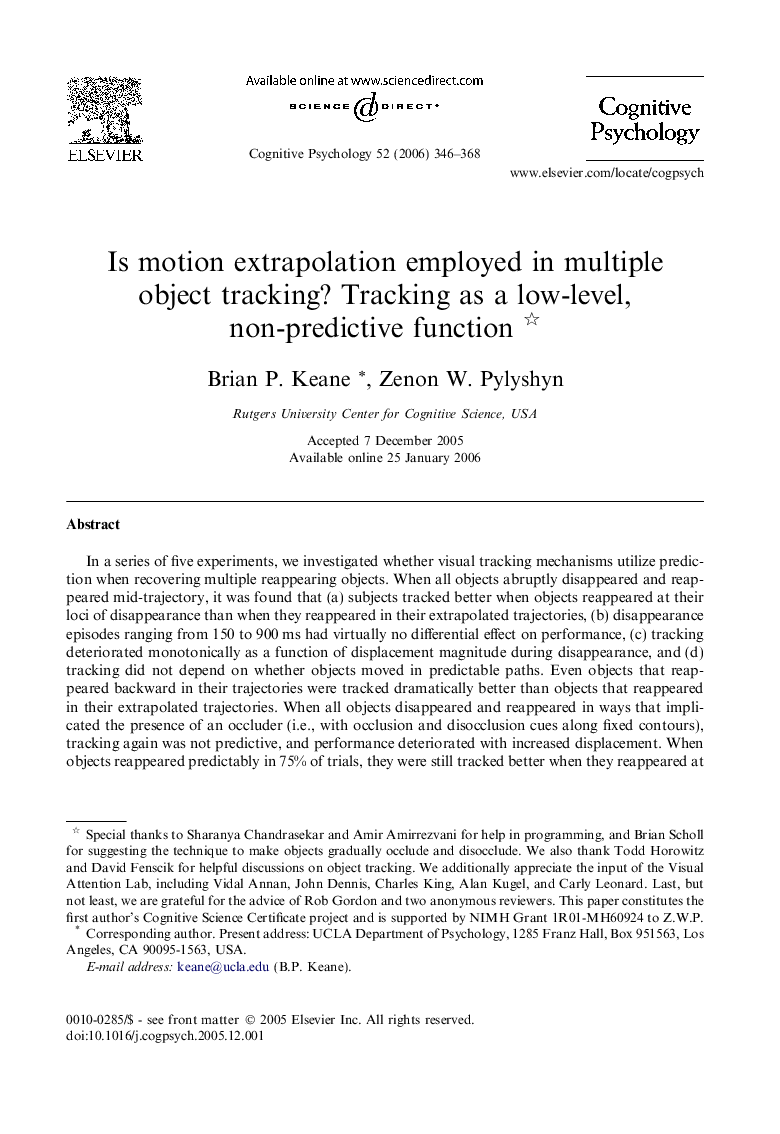| Article ID | Journal | Published Year | Pages | File Type |
|---|---|---|---|---|
| 917092 | Cognitive Psychology | 2006 | 23 Pages |
In a series of five experiments, we investigated whether visual tracking mechanisms utilize prediction when recovering multiple reappearing objects. When all objects abruptly disappeared and reappeared mid-trajectory, it was found that (a) subjects tracked better when objects reappeared at their loci of disappearance than when they reappeared in their extrapolated trajectories, (b) disappearance episodes ranging from 150 to 900 ms had virtually no differential effect on performance, (c) tracking deteriorated monotonically as a function of displacement magnitude during disappearance, and (d) tracking did not depend on whether objects moved in predictable paths. Even objects that reappeared backward in their trajectories were tracked dramatically better than objects that reappeared in their extrapolated trajectories. When all objects disappeared and reappeared in ways that implicated the presence of an occluder (i.e., with occlusion and disocclusion cues along fixed contours), tracking again was not predictive, and performance deteriorated with increased displacement. When objects reappeared predictably in 75% of trials, they were still tracked better when they reappeared at their points of disappearance. Theoretical implications of a non-predictive multiple object tracking mechanism are discussed.1
